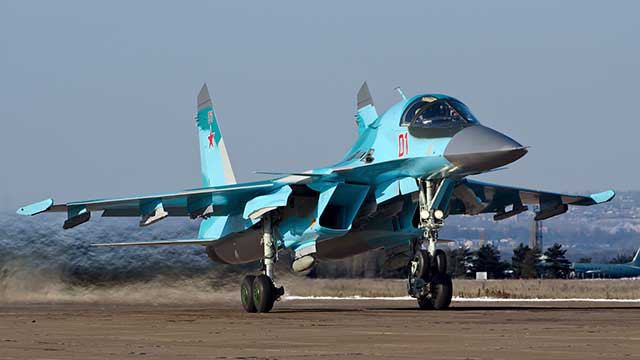Russia shot down one of its advanced aircraft over Luhansk. Sukhoi Su-34M was hit and taken down on Sunday. Russia's brand new advanced bomber was barely a month old.
The fighter jet's identity could only be confirmed through its wreckage which had the registry RF-95890. In June, Sukhoi delivered ten 'Su-34Ms' to the Russian air force.

Su-34M Was Shot Over Alchevsk
"Last night, the air defense crew of the allied forces destroyed a target in the sky over Alchevsk (LPR). The nature of the target is not clear. The burning ball fell to the ground for more than a minute," wrote Russian propagandist Yevgeny Poddubny on Telegram with a video on Monday.
Russia/LNR air defenses destroyed the fighter jet over Alchevsk.
Friendly Fire Incident
The shooting down of its own plane appears to be a case of friendly fire, according to reports.
Su-34s have been the workhorse of the Russian Aerospace Forces, sustaining heavy casualties in the country's invasion of Ukraine. Ordered in 2020, it was developed with the capability of carrying a wider range of precision weapons, as well as other improvements to avionics, according to AeroTime.
Four Su-34Ms Were Delivered To Russian Air Force in Early July
Some reports have claimed that in this year in early July, four Su-34Ms was delivered to Russian Air Force and was directly deployed for the Ukraine war.
The Sukhoi SU-34 is a Soviet-origin Russian twin-engine, twin-seat, all-weather supersonic medium-range bomber. It first flew in 1990, intended for the Soviet Air Forces, before entering service in 2014 with the Russian Air Force, according to Daily Express.
Russians First Shared Videos of The Downed Jet
It was Russians who first shared the video of the downed jet on Telegram believing that the plane was Ukrainian. But after the visuals were analyzed and its registry RF-95890 was noticed, experts confirmed that it was Russia's Sukhoi Su-34 M.
Read more









